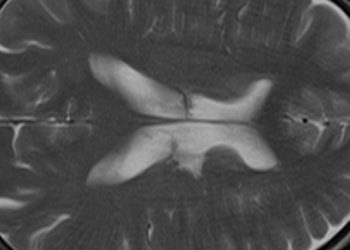High rates of background television exposure found among US children
Image: PD
Key study points:
1. Children between 8 months and 8 years of age are exposed to 232.2 minutes of background television on a typical day.
2. Higher levels of exposure are associated with younger age, African American race, lower parental education, and certain media practices.
Primer: In recent years, there has been a growing level of concern regarding the effect of television (TV) exposure on the cognitive, psychiatric, and social development of children. While numerous studies have suggested that early television exposure can be detrimental to healthy mental development, promoting inattention and aggressive behaviors, the majority of these studies have focused on active exposure. However, it has become increasingly evident that even background TV exposure may have harmful effects, with recent studies linking TV-viewing as a secondary activity to reduced reading comprehension, spatial problem solving, and cognitive flexibility scores. Further, while research has established that children in the United States watch an average of 80 minutes of television a day, there have been no studies investigating the level of background television exposure. Thus, the authors of this study sought to establish an estimate of the prevalence of background TV exposure among US children.
Background reading:
2. Early Television Exposure and Subsequent Attentional Problems in Children [Pediatrics]
3. Background Television as an Inhibitor of Cognitive Processing [Human Communications Research]
This [cross-sectional] study: 1,454 English-speaking US households with a child between ages 8 months and 8 years were surveyed. Primary caregivers were asked questions regarding household demographics (including race/ethnicity, gender, and age of the child, caregiver education, and family income) and home media practices. Each child’s background television exposure on a typical day was assessed using a 24-hour time diary. The authors found that, on average, children were exposed to 232.2 (CI: 208.6-256.1) minutes of background television each day. When all demographics correlates are considered at once in regression analysis, higher rates of exposure were significantly associated with younger rather than older age (F=9.67, p<0.001), with lower rather than higher parent education levels (F=17.98, p<0.001), and with African American rather than white race (F=2.31, p<0.05). Further, certain media practices, including presence of a television in the child’s room and incidence of leaving the TV on despite no one watching, are associated with increased exposure (B=60.85, SE:29.30 and B=62.27, SE: 9.19, respectively).
In sum: Background television exposure is highly prevalent among US children, with the average child between ages 8 months and 8 years exposed to over 5.5 hours on a typical day. Higher rates of exposure are linked to age, race, and caregiver education. While these aforementioned risk factors are fixed constants, the association of increased exposure with certain media practices, including the presence of a bedroom television and the habit of keeping a TV on despite no one watching, suggests that there are some dynamic variables that may be targeted by efforts to reduce background television exposure in children.
This study faces several limitations which are addressed by the authors. First, as only households with at least 1 adult English speaker were surveyed, there may be some reduction in the generalizability of the findings to the greater US population, where a large fraction is headed by non-English speaking parents. Second, data was based only on the response of one parent and no efforts were made to assess the reliability of the single parent’s assessment in reflecting true home exposure. Finally, and most importantly, the study’s measure of background exposure was adapted from methods used to measure foreground exposure and thus have not been formally assessed with regards to reliability and validity. This is the first study assessing the level of background television exposure among US children. Further research is needed to validate the methods used in this study and to better delineate the role that TV content plays in the effect of background exposure on children.
Click to read the study in Pediatrics
Written by [MK]
© 2012 2minutemedicine.com. All rights reserved. No works may be reproduced without written consent from 2minutemedicine.com. DISCLAIMER: Posts are not medical advice and are not intended as such. Please see a healthcare professional if you seek medical advice.




